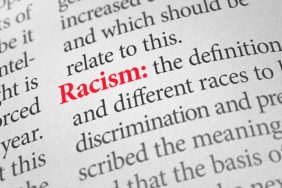Photo: KAREN BLEIER/AFP/Getty Images
In the unconscious nether state of the dream, fantasy and nightmare commingle in a cocktail of signs, actions, words, and images that seem incredibly significant as they occur. But when we awake, if we are lucky enough to remember them, it’s often impossible to make sense of the snippets of information with any sort of logic or sense. Yet we know, from our gut emotional reaction, they were fraught with significance.
Also: Life is But a “Dream”—Or Is It?
While we are apt to discard dreams for their diaphanous nature, we are quick to recognize things are amiss when waking life occurs as a dream. It’s a strange sensation, one that has earned its own word: surreal, which the Merriam-Webster dictionary defines as: “marked by the intense irrational reality of a dream; synonyms: unbelievable fantastic.”
On Monday, December 19, Merriam-Webster announced, “’Surreal is our 2016 Word of the Year.” In a statement, the company confirmed that that word was chosen, “because it was looked up significantly more frequently by users in 2016 than it was in previous years, and because there were multiple occasions on which this word was the one clearly driving people to the dictionary.”
The top occasion was the election of Donald Trump; it was also the leading word in March during the Brussels terror attacks, then again in July during the coup attempt in Turkey and the terrorist attack in Nice.
The statement explains, “Surreal is often looked up spontaneously in moments of both tragedy and surprise, whether or not it is used in speech or writing. This is not surprising: we often search for just the right word to help us bring order to abstract thoughts, emotions, or reactions. Surreal seems to be, for 2016, such a word.”
The concept of the surreal was first introduced more than a century ago. French poet and playwright Guillaume Apollinaire coined the word surrealist, which first appeared in the preface to his play Les Mamelles de Tirésias (written in 1903, performed in 1917). The play tells of a woman who changes her sex to become a man, in order to obtain the power necessary to subvert the patriarchy in a quest for equality. Clearly, Apollinaire saw the way the wind was blowing.
The surreal came into vogue during in the 1920s in the wake of World War I, when European artists adopted it as a mode for creating work. Poets, painters, photographers, and filmmakers alike came together in the Surrealist movement, which embraced the irrational landscape of the unconscious mind as a portal to understand the nature of modern life. Among the best known artists of group are Salvador Dali, Marcel Duchamp, Man Ray, Luis Buñuel, Rene Magritte, Max Ernst, and André Breton, whose influence on fine art and popular culture can still be felt today. The success of the Surrealist movement launched the popular use of the word itself, and by 1937 surreal was on its own.
Now, eight decades later, we see its return. The idea born of the first World War finds itself manifesting in people’s minds when they turn on the television or check the news. Everyday, another disturbing twist of fate occurs—but the difference is: we cannot rile ourselves awake from this dream. This is the truth of our world.
Miss Rosen is a New York-based writer, curator, and brand strategist. There is nothing she adores so much as photography and books. A small part of her wishes she had a proper library, like in the game of Clue. Then she could blaze and write soliloquies to her in and out of print loves.







